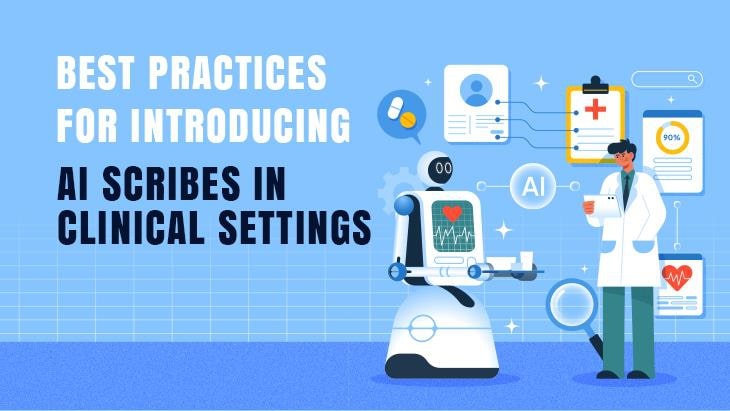For many years, the most common way to test apps has been through manual testing. This involves assembling a team of testers who interact with the app by hand, pushing every button and making sure that all functions work as they should. But with apps becoming more intricate and users expecting higher quality, manual testing can feel like tasting a seven-course meal using only one spoon. This is where scriptless automation tools step in, they provide an easier and smoother method for checking if your app is prepared for mass use.
Transforming Web and Mobile App Testing Processes with Scriptless Testing
As we remember, manual testing is always there in app development. It's like a good old friend who helps find problems and makes sure your app works right. But, as the complexity of applications increases and the time to release them gets shorter, testing manually can slow down teamwork and reduce your ability to deliver high-quality apps quickly for users.
Scriptless testing is a newer way of app testing that makes your work smarter by reducing manual jobs and helps to give better applications faster. However, before we go into the scriptless testing world, we should talk shortly about the problems associated with manual testing.
Challenges of Manual Testing
1. Time-Consuming and Laborious
Examining the application manually is a tiresome job that requires testers to explore every potential situation, clicking on buttons, filling out forms with data and verifying whether the app responds correctly. As applications grow in complexity, the number of test scenarios rises very quickly which turns manual testing into a challenging and time-consuming task.
2. Prone to Human Error
Humans are capable of errors and no one is without imperfections. Testers who excel at their work can miss details or do a task wrongly, especially when it gets monotonous and uninteresting.
3. Limited Test Coverage
In manual testing, you can only go over a certain amount of ground. Test cases are usually restricted because of time and resource limits, which could result in some parts not being checked properly.
4. Difficulty in Regression Testing
Whenever you alter or include a fresh function into your app, it is necessary to confirm that the existing functioning doesn't get disturbed. Performing manual regression testing can rapidly transform into a bad dream, as you must re-run all the test scenarios each instance you modify something.
5. Scalability Issues
When your application becomes bigger and the number of users rises, there is a need for more testing. Manual testing might not be able to handle the demand for quicker release phases and wider-ranging tests as easily.
Advantage of Scriptless Testing in Mobile and Web app Testing
1. Faster Test Creation and Execution
You can make and run tests without writing any code by using scriptless testing. Various tools for scriptless testing have interfaces that are easy to use, letting you record what you do and change it into test cases that can be used again with just a few clicks. These simple methods help you reduce the time and work needed for making and running tests.
2. Increased Test Coverage
Testing tools that don’t use any programming scripts frequently have integrated functions for producing test cases depending on your program's UI elements and user pathways. This signifies you can make complete test sets fast, covering many situations to achieve superior testing scope and discover more possible faults.
3. Improved Collaboration and Accessibility
Scripted testing has a need for special programming abilities, and this can create a separating factor among developers and testers. However, scriptless testing tools provide an alternative that is much easier to access and use. This helps non-technical members of the team participate in the testing process more readily, promoting better cooperation.
4. Accelerated Regression Testing
When using scriptless automation tools, every single test can be re-run whenever you modify your app. This simplifies the process of regression testing and saves numerous hours. It also guarantees that your app stays steady and free from bugs as you keep on introducing fresh characteristics and functionality.
5. Parallel Test Execution
Many tools for testing without scripts can perform checks at the same time on different devices or web browsers. This could greatly cut down the total time you spend on testing, making it possible to receive feedback more quickly and speed up when you release new versions.
6. Cross-platform and Cross-Browser Testing
AnchorA major difficulty during mobile and web app testing is to make sure the app functions smoothly on various platforms, different devices, and internet browsers. Tools for testing without scripts usually provide support directly for tests across both platforms and browsers. This makes it simpler to confirm that your application gives a uniform experience no matter what setting the user has.
7. Seamless Integration with CI/CD pipelines
Continuous Integration and Continuous Deployment, known as CI/CD, are now very important for teams that build apps today. Tools for testing without scripts can often be added to your CI/CD workflows with ease. This lets you perform automated tests during the building and deploying stages, helping you find problems soon so that only good code is sent out to the final product stage.
8. Reduced Maintenance Overhead
In the usual way of testing with scripts, small adjustments in your app's appearance or operations can make those test scripts not work anymore. Then you must use a lot of time and effort to keep them working right. But if you use tools for testing without scripting, they handle changes in the UI better so there is less need for upkeep. This lets you concentrate on the most important goal – developing intuitive applications.
Moving from manual to scriptless testing for your web and mobile app testing methods is a path of progress. It possesses the potential to bring substantial advantages in terms of effectiveness, excellence, and overall team efficiency. When you adopt scriptless tools, it allows you to meet the constantly growing requirements of contemporary app development. You can produce better apps more swiftly while making sure users have an enjoyable experience with them.

















Post Comments